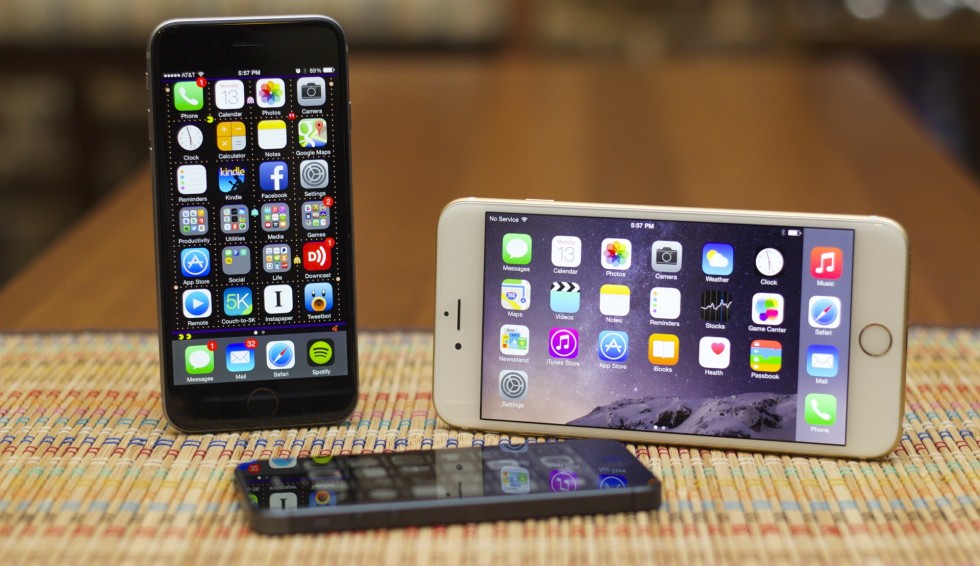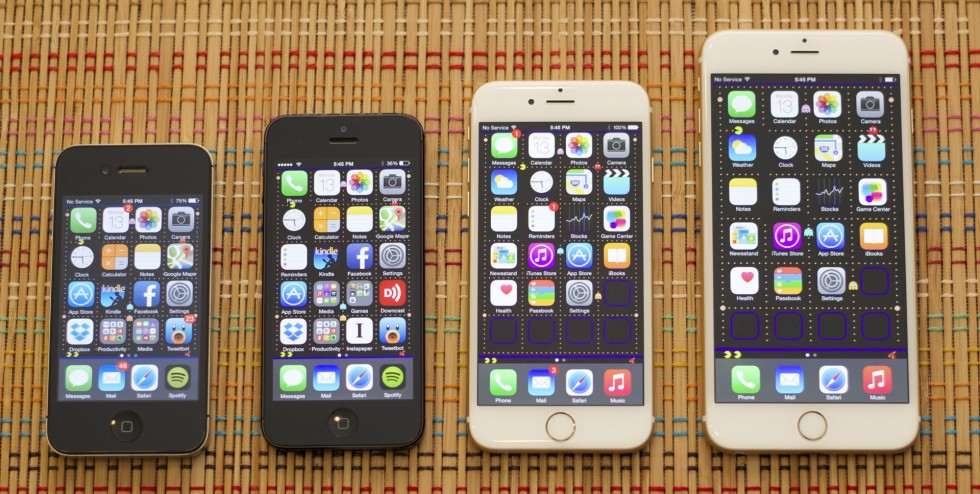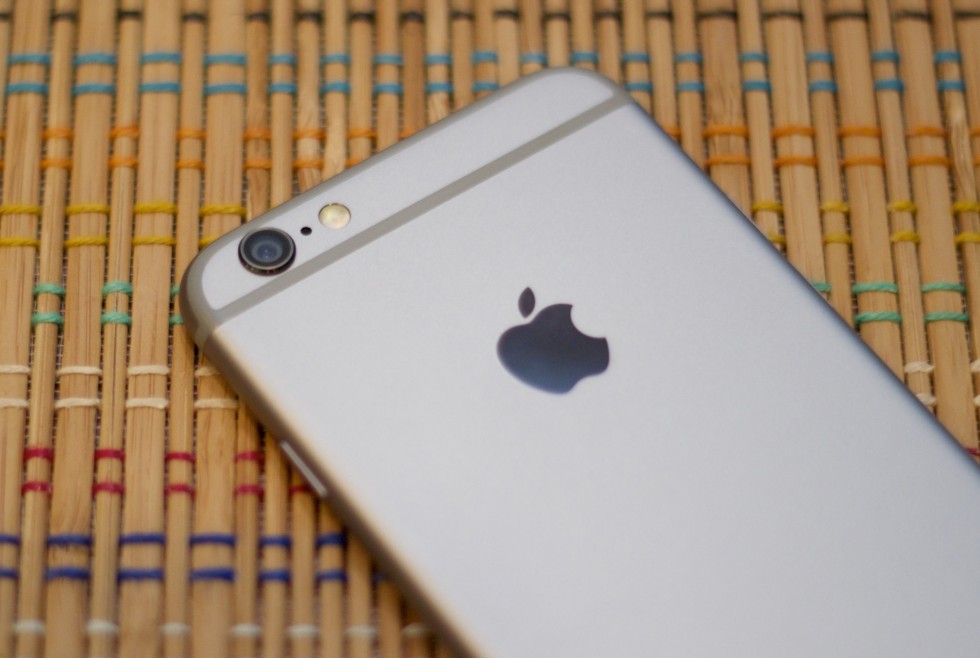
Big-screened iPhones are what the people want, and Apple has acquiesced. After months of part leaks and rumors, you can finally buy the newer, bigger, faster iPhone 6 and 6 Plus, and it looks like plenty of people are doing so.
Any review of the new phones needs to spend an extensive amount of time with these screens, since they're the headlining feature and the one that the most people will notice. We're going to spend a lot of time with them, too, but there's a lot more going on here than just big displays—Apple has upgraded the phones' cameras, expanded their batteries, and replaced last year's 64-bit A7 chip with the brand-new A8. iOS 8, a large release even if you're not upgrading your phone this year, has picked up some features (and some challenges) unique to these new phones.
Buckle up, because we've gotten our hands on the new phones, and we've been torture-testing them during every waking moment since. Wondering what the iPhone 6 Plus' optical image stabilization does for your pictures? Want to know more about the Apple A8 and which of Apple's promises about the chip stand up to scrutiny (hint: not all of them)? Need to know what your apps are going to look like and how they're going to work in this brave new big screen world? Read on, because we've got all that and more.
| Specs at a glance: Apple iPhone 6 | |
|---|---|
| Screen | 1334×750 4.7-inch (326PPI) IPS touchscreen |
| OS | iOS 8.0 |
| CPU | ~1.4GHz Apple A8 |
| RAM | 1GB |
| GPU | "Apple A8 GPU," possibly an Imagination Technologies PowerVR GX6450 |
| Storage | 16, 64, or 128GB |
| Networking | 802.11ac Wi-Fi (433Mbps), Bluetooth 4.0, NFC (Apple Pay only) |
| Ports | Lightning, headphones |
| Camera | 8MP rear camera, 1.2MP front camera |
| Size | 5.44" x 2.64" x 0.27" (138.1 x 67.0 x 6.9mm) |
| Weight | 4.55oz (129g) |
| Battery | 1810mAh |
| Starting price | $199 with two-year contract, $649 unlocked |
| Other perks | TouchID fingerprint sensor |
| Specs at a glance: Apple iPhone 6 Plus | |
|---|---|
| Screen | 1920×1080 5.5-inch (401PPI) IPS touchscreen |
| OS | iOS 8.0 |
| CPU | ~1.4GHz Apple A8 |
| RAM | 1GB |
| GPU | "Apple A8 GPU," possibly an Imagination Technologies PowerVR GX6450 |
| Storage | 16, 64, or 128GB |
| Networking | 802.11ac Wi-Fi (433Mbps), Bluetooth 4.0, NFC (Apple Pay only) |
| Ports | Lightning, headphones |
| Camera | 8MP rear camera with OIS, 1.2MP front camera |
| Size | 6.22" x 3.06" x 0.28" (158.1 x 77.8 x 7.1mm) |
| Weight | 6.07oz (172g) |
| Battery | 2915mAh |
| Starting price | $299 with two-year contract, $749 unlocked |
| Other perks | TouchID fingerprint sensor |
What's different?
Since this is a two-fer review, let’s start by outlining the difference between both the new devices. The iPhone 6 and 6 Plus are like the Retina iPad Mini and the iPad Air, or like the 11- and 13-inch MacBook Airs. They’ve got mostly the same insides and design touches, with a handful of differences. Many things in this review will apply to both phones; when they don’t, we’ll be sure to specify which one we’re referencing.
Here’s a list of the major differences between the 6 and the 6 Plus, aside from their physical dimensions:
- Screen size: iPhone 6 is 4.7 inches and 1334×750, iPhone 6 Plus is 5.5 inches and 1920×1080.
- Battery: iPhone 6 is 1810mAh, iPhone 6 Plus is 2915mAh.
- Camera: The iPhone 6 Plus adds optical image stabilization (OIS) to the same camera the iPhone 6 uses.
- Software: The iPhone 6 Plus’ larger screen lets it do a few things the iPhone 6 can’t, though not without caveats.
Look and feel
Since the first iPhone 6 part leaks began, I’ve thought of the new design as the child of an iPhone 5 and an HTC One. Both of those phones share a mostly metal chassis with strips sliced out of it to let wireless signals through. But the iPhones retain distinctly Apple-esque design touches—symmetrical front bezels with the TouchID-equipped Home button, solid and creak-free construction, and an obsession-to-a-fault with thinness.
In most respects, both new iPhones are worthy of their predecessors. Apple’s build quality is characteristically excellent, and neither phone exhibits even a hint of creaking, flexing, or button-wobbling. The nicest change is that the hard edges of the iPhone 4- and 5-era designs have been expelled in favor of rounded edges that run all the way around the back of the phone. They blend (nearly) seamlessly with the gently curved glass on the front of the phone, making the whole thing comfortable to hold.
Though it’s larger and more curvy, the rest of the design should be pretty familiar if you’ve ever seen an iPhone. The Home button, still ringed by the TouchID fingerprint sensor, remains a mainstay, and this year’s version feels and sounds more rigid and clicky than the version in our 5S. The long rectangular volume buttons on the left edge of the phone under the mute switch resemble those used by the iPhone 5C or iPads rather than the round buttons of the iPhone 4 or 5. The power button has moved to the right edge of the phone, as with many larger Android phones; with devices this big, this placement is easier to hit with one hand than a button on top of the phone might be. The nano SIM tray still sits on the right edge of the phone.
The iPhone 6 design isn’t really doing a whole lot that’s new, not if you're paying attention to what any of the high-end Android and Windows phone hardware makers have been doing. But Apple takes many individual things that have been done well in other phones—those rounded edges, the curved glass, the larger, higher-resolution displays—and combines them all into one nicely assembled package. We only have two complaints about the new design, compared both to iPhones of past years and to the Android-based competition. And both, I suspect, stem from the aforementioned obsession with thinness.
The first complaint is that, compared to most recent Android handsets, the new iPhones don’t have a particularly good screen-to-bezel ratio. This is due in part to the TouchID button, a genuinely useful feature for which we’d gladly trade a smaller bezel. But especially in the iPhone 6 Plus, there’s plenty of extra bezel around the Touch ID button that feels like it could have been condensed, and Apple’s love of symmetry means any space shaved off of the bottom bezel could automatically be removed from the top bezel as well.
-
The iPhone 6, Galaxy S5, iPhone 6 Plus, and Galaxy Note 3. Apple has officially thrown its hat into the big-phone ring.Andrew Cunningham
-
The camera bump on the back is inherited from the fifth-gen iPod Touch.Andrew Cunningham
-
The power button has migrated from the top of the phone to the right edge, where it can be reached more easily by a finger or thumb while being used one-handed.Andrew Cunningham
-
Long, rectangular volume buttons and curved edges.Andrew Cunningham
-
Lightning ports, speakers, and tiny screws. iFixit says that both iPhones 6 should be relatively easy to repair.Andrew Cunningham
The second issue is the protruding camera lens that you’ve probably already read about. It has been described as a “bulge,” though next to any recent Galaxy or high-end Lumia phone it’s a bump at best. It has generated press mostly because Apple is sort of trying to hide it. This is the first time Apple has shipped an iPhone with a lens that hasn’t been flush with the back of the case, but it isn’t the first iOS product to have this design. The fifth-generation iPod Touch, that oft-forgotten member of the iOS family, includes a near-identical camera bump. The new iPhones are each about a millimeter thicker than the iPod Touch, but that device’s slightly rounded edges, camera bump, and general thin-ness mark it as a clear predecessor to the iPhone 6 models.
Because of that bump, both new iPhones wobble a bit if you're tapping at them while they lie on a hard, flat surface. Putting just about any kind of case on the phones will even things back out, since most cases (including Apple's own silicone and leather offerings) are thicker than the lens. You'll only have a problem if you prefer naked phones.
Bigger screens

Screens are the headlining feature of the iPhone 6. Let's start with the way the screens themselves look, then move on to the way that iOS and its apps accommodate the new displays.
The iPhone 6 uses a 4.7-inch display panel with a 1334×750 resolution, retaining the 326 PPI density introduced with the iPhone 4 in 2010. The phone can show you more content at a time, but the size and sharpness of that content will be exactly the same as it has been for a few years now. High-end Android phones in the same price range have all moved to sharper displays, mostly 1080p displays with pixel densities somewhere in the mid-400s per inch. Still others are creeping up past that line to even more absurd heights.
Our position on the density issue hasn't shifted much since we first began talking about 1080p phone displays back in 2012. Eagle-eyed users certainly can notice the difference when moving up to and past 400 pixels per inch, but such pixel densities provide diminishing returns even for small text and images. We like a nice 1080p screen, all else being equal, but we're perfectly happy with the density of phones like the original Moto X or the iPhone 5S, and we suspect most regular people won't notice a difference day-to-day. Brightness, contrast, viewing angles, color, and even things like light bleed will be more noticeable than additional density improvements, and both new iPhone screens do an excellent job there.
The iPhone 6 Plus makes the jump to 1080p, which at 5.5 inches works out to 401 PPI, comparable in both size and density to last year's Galaxy Note 3. The screen is appreciably sharper than the one on the iPhone 6 or those on older Retina iPhones (despite some software tricks we’ll discuss later), but it’s not nearly the night-and-day shift as moving from non-Retina to Retina. Both the iPhone 6 and 6 Plus displays look quite similar, though Apple says the contrast ratio on the 6 is just a little better than on the 6 Plus (1400:1, compared to 1300:1). Both screens should be a solid improvement over the iPhone 5's 800:1 contrast ratio. Our colorimeters peg the iPhone 6's maximum brightness at 495 nits and the iPhone 6 Plus at 537 nits, compared to 485 nits for the iPhone 5S and 473 nits for the iPhone 4S.
Camera

Apple has kept an 8MP camera in both new phones—offering the same megapixel count its cameras have used since the iPhone 4S in 2011. Megapixel count isn't everything, though, and Apple has slapped a brand-new camera sensor in both phones and upgraded the image signal processor (ISP) block in the phones' A8 processor. You won't see its effects in the shots below, but the phase-detection autofocus is a great feature. My smartphone camera muscle memory has a built-in pause to allow the camera to focus, and at first I thought something was wrong when I couldn't see the phone adjusting itself. Turns out, that's just how quick auto-focus is now.
When you look at our test shots below, remember that the iPhone 6 and the iPhone 6 Plus have identical camera hardware, save for the optical image stabilization (OIS) feature built into the 6 Plus.
How does OIS work? Without getting too far into the photography weeds, the simple explanation is that a camera wants to let in as much light as possible. It can get more of this light by opening up the aperture (the size of the opening letting light through the lens) or by extending shot time (holding the shutter open longer) or by increasing the sensitivity of the image sensor (by raising the ISO setting). The first option reduces the focus depth of a shot significantly, especially with nearby objects, while the second can introduce camera shake from the natural motion of the hand and body. The third option increases image noise—significantly as you venture into high ISOs used in low-light situations.
The OIS feature addresses the vibration problem by situating the lens within a housing that moves in opposition to hand tremors and vibration, stabilizing the lens and allowing longer shots with less camera shake. That explains why, in the images below, the iPhone 6 used a shutter speed of 1/15 (0.07 seconds), while the iPhone 6 Plus used a slower a shutter speed of 1/4 (.25 seconds). OIS provides two extra stops of exposure—which, since the iPhone cameras have fixed apertures, is gained by keeping the shutter open longer (or by a combination of adjusting the shutter speed and ISO). Bottom line: better pictures, especially in low light.
-
iPhone 6.Andrew Cunningham
-
iPhone 6 Plus.Andrew Cunningham
-
iPhone 5S.Andrew Cunningham
-
iPhone 5/5C.Andrew Cunningham
-
HTC One M8.Andrew Cunningham
-
Galaxy S5.Andrew Cunningham
-
Moto X (2014).Andrew Cunningham
-
iPhone 6.Andrew Cunningham
-
iPhone 6 Plus.Andrew Cunningham
-
iPhone 5S.Andrew Cunningham
-
iPhone 5C.Andrew Cunningham
-
HTC One M8.Andrew Cunningham
-
Galaxy S5.Andrew Cunningham
-
Moto X (2014).Andrew Cunningham
-
iPhone 6.Andrew Cunningham
-
iPhone 6 Plus. Note the cleaner lines and reduced noise level enabled by the OIS feature.Andrew Cunningham
-
iPhone 5S.Andrew Cunningham
-
iPhone 5C.Andrew Cunningham
-
HTC One M8.Andrew Cunningham
-
Galaxy S5.Andrew Cunningham
-
Moto X (2014).Andrew Cunningham
-
iPhone 6.Andrew Cunningham
-
iPhone 6 Plus.Andrew Cunningham
-
iPhone 5S.Andrew Cunningham
-
iPhone 5C.Andrew Cunningham
-
HTC One M8.Andrew Cunningham
-
Galaxy S5.Andrew Cunningham
-
Moto X (2014).Andrew Cunningham
-
iPhone 6.Andrew Cunningham
-
iPhone 6 Plus.Andrew Cunningham
-
iPhone 5S.Andrew Cunningham
-
iPhone 5C.Andrew Cunningham
-
HTC One M8.Andrew Cunningham
-
Galaxy S5.Andrew Cunningham
-
Moto X (2014).Andrew Cunningham
-
iPhone 6.Andrew Cunningham
-
iPhone 6 Plus.Andrew Cunningham
-
iPhone 5S.Andrew Cunningham
-
iPhone 5C.Andrew Cunningham
-
HTC One M8.Andrew Cunningham
-
Galaxy S5.Andrew Cunningham
-
Moto X (2014).Andrew Cunningham
Finally, the new iPhones both increase the framerate at which video can be captured. Standard 1080p video goes from 30fps to 60fps, while slo-mo video goes from 120fps to 240fps. We've recorded some sample footage below. Note just how dark the indoor scenes shot at 240fps are—the sample with the water being poured into the glass was shot in a well-lit room, but everything remains exceedingly dim and noisy. Slo-mo mode wants as much light as it can get—remember that when you're shooting footage.
reader comments
345